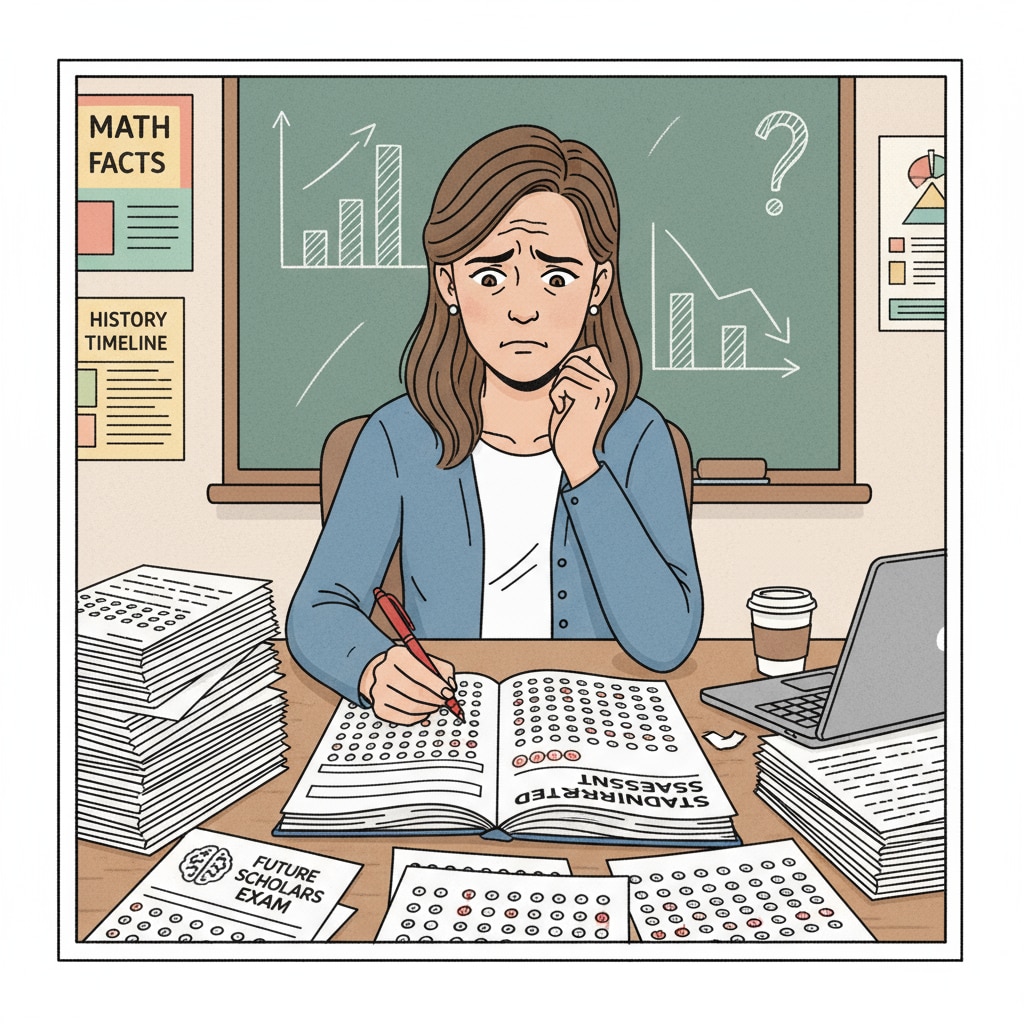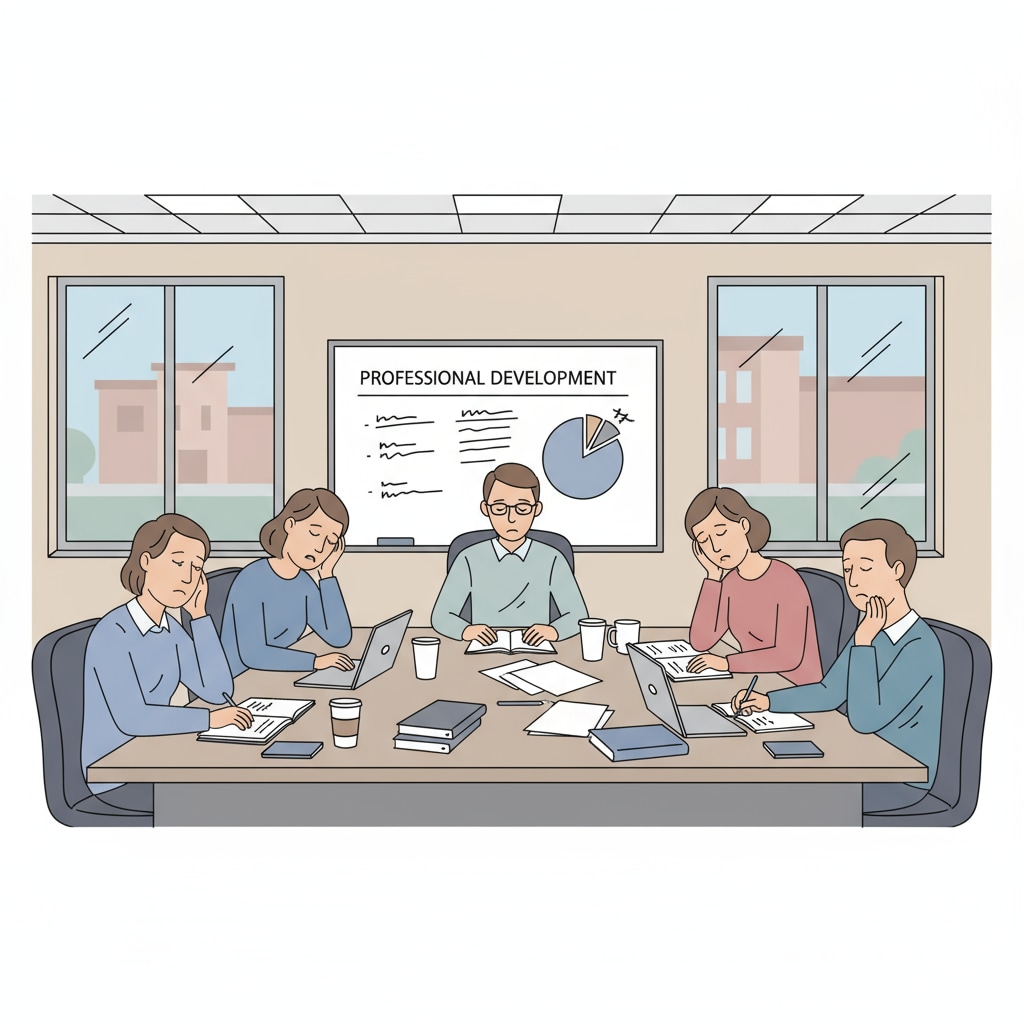In the realm of K12 education, micro – management, teaching documentation, and teaching autonomy have become crucial and intertwined topics. Teachers often find themselves in a situation where excessive micro – management is exerting significant pressure. This phenomenon not only affects their daily work but also has far – reaching implications for the quality of education.

Standardized assessments, a major aspect of micro – management, have set a rigid framework for teaching. Teachers are required to adhere strictly to these assessment criteria, leaving little room for creativity.
The Burden of Standardized Assessments
Standardized assessments in K12 education have become a double – edged sword. On one hand, they are intended to measure students’ academic progress and ensure educational quality. However, on the other hand, they often lead to excessive micro – management. Teachers are constantly under pressure to prepare students for these tests. According to Standardized testing on Wikipedia, the curriculum is often narrowed down to focus solely on the content covered in the assessments. This means that teachers have less freedom to explore diverse teaching methods and materials, stifling their creativity. For example, in a language arts class, instead of encouraging students to engage in creative writing projects, teachers may be forced to focus on rote memorization of grammar rules to meet the requirements of the standardized test.

The Cumbersome Teaching Documentation
Teaching documentation is another area where micro – management is evident. Teachers are required to create detailed lesson plans, student progress reports, and various other documents. While documentation can be useful for reflection and communication, the current level of detail and frequency is often overwhelming. As stated in Why Lesson Plans Matter and How to Write Them on TeachThought, excessive documentation takes up a significant amount of teachers’ time. They could be using this time to plan more engaging lessons or interact with students. For instance, a teacher may spend hours each week filling out forms about students’ daily activities, leaving less time for actual teaching and student support.
Moreover, the requirement for uniformity in documentation further restricts teachers’ autonomy. They are often expected to follow a specific format and include certain elements, regardless of whether it suits their teaching style or the needs of their students.
Readability guidance: Here, we’ve seen how standardized assessments and teaching documentation, key aspects related to micro – management, are affecting teachers’ teaching autonomy. In the next section, we’ll explore another challenge – the impact of numerous meetings.
The Impact of Meetings on Teaching Autonomy
Meetings are an integral part of the education system, but in many cases, they have become a hindrance to teaching autonomy. Teachers are frequently pulled out of their classrooms to attend meetings that may not be directly relevant to their teaching. These meetings often involve discussions about administrative policies, new initiatives, or standardized assessment results. As a result, teachers have less time to focus on their students and plan innovative lessons. For example, a teacher may have to attend a weekly meeting to discuss the district’s new grading policy, which could have been communicated through an email. This time could have been better spent on preparing individualized learning plans for students.

In addition, the decisions made in these meetings are often top – down, leaving little room for teachers’ input. This lack of participation in decision – making further erodes their sense of professional autonomy.
Readability guidance: Having analyzed the various challenges related to micro – management, teaching documentation, and their impact on teaching autonomy, it’s time to explore potential solutions.
Restoring Teaching Autonomy
To address these issues and restore teaching autonomy, several steps can be taken. First, educational institutions should reevaluate the role of standardized assessments. Instead of using them as the sole measure of student success, they could be used as one of many tools for assessment. This would allow teachers to have more freedom in designing their curriculum and teaching methods. Second, the amount and nature of teaching documentation should be streamlined. Only essential documents that truly contribute to teaching and learning should be required. Third, meetings should be more focused and relevant. Teachers should be involved in the decision – making process to ensure that their voices are heard.
In conclusion, micro – management, teaching documentation, and teaching autonomy are complex issues in K12 education. By recognizing the challenges and taking appropriate actions, we can create an environment where teachers can fully utilize their professional expertise and creativity, ultimately benefiting the students they teach.


